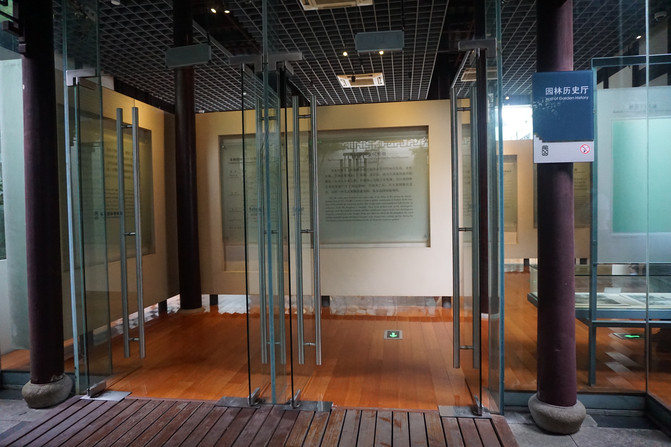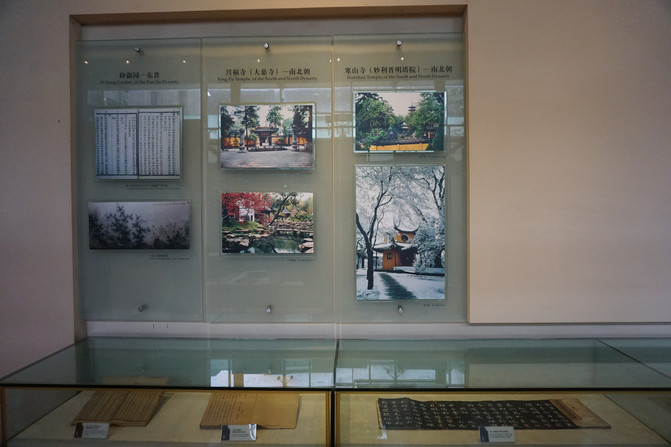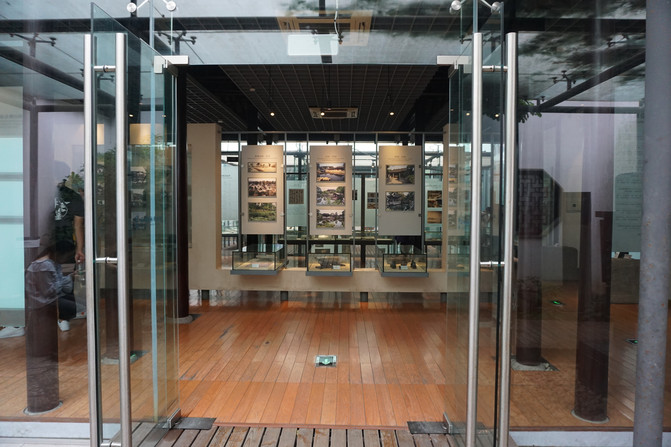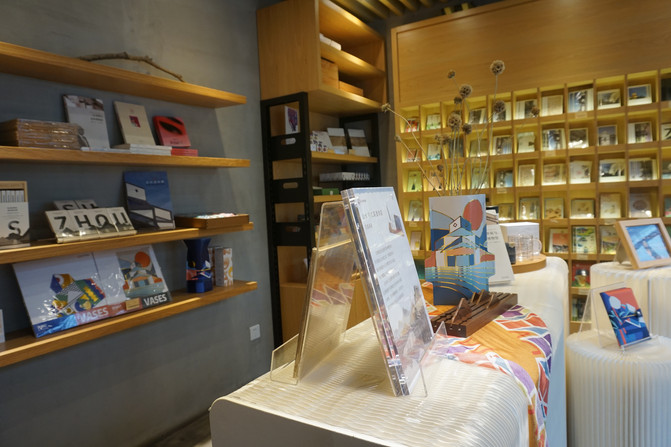Suzhou Garden Museum, the "textbook" of Suzhou gardens
Walking time: 2021.5
D1:
Walking route: Suzhou Taihu Lake Lakeside National Wetland Park-Baodai Bridge
D2:
Walking route: Picking loquat in Xishan-Suzhou Garden Museum
The theme of this Suzhou trip is loquat picking, and the activity ended at noon. I returned from eating farm food in Xishan. We encountered a traffic jam on the way back. I had no plans to return to Nanjing immediately, so I was not in a hurry at all. Now that I'm away and it's beautiful Suzhou, picking a few loquats is not my purpose. I chose to visit Suzhou Museum. Firstly, I have never been to this beautiful Internet celebrity museum, and secondly, the museum is located next to the subway station one stop away from the train station. But I just remembered that museums now require reservations. Enter the public account to make an appointment, and the quota for that day has long been lost. I am not willing to accept it, so I went to the scene to have a look. Maybe a kind staff member will let me in.
Traffic jams, and some people who bought afternoon tickets and returned were extremely annoyed. I watched the city scenery calmly. Some people have a busy pace of life and cannot disrupt the plan of a certain step. Once it is disrupted, everything will become chaotic. And my age is exactly the age when I don't need to be busy. Old people live with each other and children study alone. I don't need to surround others. I want to slow down, arrange myself, and enjoy the time I have at my disposal these past few years.
In order to save time, the bus stopped at a subway station. We got off and took the subway together. Our companions rushed to the train station. I got off at the previous stop, Beisi Tower. There is no luggage storage equipment in subway stations. I really hope that some cities, especially some tourist stations in tourist cities, can have luggage storage equipment in subway stations. Even if it is charged, it will be very convenient. Don't say, Suzhou people are just smart. About a hundred meters away from the subway station, a chestnut shop provides bag storage service for five yuan. That's great. It freed my shoulders all at once. I travel lightly.
Not far from walking, I saw the Suzhou Museum on Northeast Street. Unfortunately, I couldn't enter without an appointment. It is not possible to get close to the staff and say good things. It seems that this is a strictly managed unit. The staff told me that I could go to the Garden Museum in front of me, which did not require an appointment. This is my second-hand preparation. Come on, this is obviously an excuse for me to come to Suzhou next time! There is a little disappointment, but it doesn't affect your mood at all, because Suzhou is a city with scenery everywhere. If you can't see this area, there must be another scenery waiting for you there.

Passing by the door of King Zhong's Mansion. The Suzhou Museum is located at the Mansion of Li Xiucheng, the loyal king of the Taiping Rebellion. It is the most complete Taiping Rebellion Mansion building preserved to this day.

On the neat and beautiful Northeast Street, the sycamore trees on both sides of the street are all beautifully built.

Suzhou Garden Museum is 50 meters away from Suzhou Museum and is located on the west side of Humble Administrator's Garden. The museum opened in 1992 and is China's first dedicated garden museum. The new building was built in October 2005. The museum maintains the characteristics of Suzhou folk houses with white walls and black tiles, and is in harmony with the surrounding classic garden masterpieces such as Humble Administrator's Garden. A typical building with white walls and black tiles, simple doorframes, and several gilded "Suzhou Garden Museum" on the lintel mark its identity.

Walking into the gate, I looked up and saw a simple brick wall. The logos and logos on white walls and black characters are simple and eye-catching.

As soon as you enter the door, the space is not large or even a little narrow. The wall introduces Suzhou's classic gardens with pictures and words. As soon as I entered the door, I met the service staff asking when the museum would close because it was getting late and I wanted to plan the tour time. Unexpectedly, the waiter's answer was: "You don't need tickets here, and you don't need reservations. What's so fun about it? You can watch it in a while." Her directness is so shocking!

The seemingly random objects placed in the space are relics of Yuanmingyuan. There are self-media equipment embedded in the grilled windows on the wall of the exhibition hall. Introduce Suzhou gardens through video means.

In the center of the preface hall, the double-sided embroidery of "The Painting of Humble Administrator's Garden" painted by Li Keran is displayed. Some water corridors in Humble Administrator's Garden outline the charm of Humble Administrator's Garden through silk threads. This double-sided embroidery not only expresses the exhibition theme of the museum's gardening art, but also perfectly combines traditional painting with the intangible cultural heritage Su embroidery art, and has strong artistic shock.

The Garden Museum is not like a regular museum, with a central axis and symmetrical pattern. It is more like a garden. The exhibition halls are all small and exquisite and have their own scenery. The exhibition halls are connected by verandas, forming a visiting route with winding paths leading to the scenery, winding peaks and loops, and changing scenery.

The landscape techniques of Suzhou gardens,"moving scenery","framing" and "borrowing scenery", run through the entire museum layout.

Before entering the History Hall from the Preface Hall, you must first pass through a long corridor. Outside the wall is the Humble Administrator's Garden. There are long and narrow bluestone slabs, and there are absolutely no identical flowered windows on the wall.

There are also many small courtyards deliberately set aside beside the corridors. The garden sketches inside are also exhibits. All the details make me feel like I am in a familiar Suzhou garden.

There are transparent floor-to-ceiling glass on the outside, and there are also glass windows in the exhibition hall. Everything seems so transparent.

The text display boards in the window start from Gusu Terrace in the Spring and Autumn Period and introduce in detail the development history of Suzhou gardens for 2,500 years, which has a sense of historical depth.

The selection of gardens and villas in Suzhou during the Three Kingdoms, Two Jin and Southern Dynasties is introduced with words and charts

Construction of the Garden of King Wu in the Spring and Autumn Period

During the Wei, Jin and Southern and Northern Dynasties, temples and private gardens rose one after another

Pijiang Garden during the Eastern Jin Dynasty, Xingfu Temple and Hanshan Temple during the Northern and Southern Dynasties

During the Song and Yuan Dynasties, Suzhou gardens entered a new realm, and the art of stacking stones and trees became a common practice.

During the Ming and Qing Dynasties, the Bancheng Garden Pavilion was known to be extremely prosperous, and gradually formed a garden system featuring literati landscape gardens, which typically demonstrated the development process of classical gardens in the south of the Yangtze River.


Brick carvings of the Qing Dynasty are Ruyi

Commemorative tripod of the World Garden Congress

The exhibition hall introduces Suzhou Park, Qiyuan and Puyuan during the Republic of China through pictures, texts and models

The stone pillars, flowers and trees in the small patio are also indispensable elements of the garden

Follow the arrow to the core exhibition hall of the museum

Garden Art Hall

The exhibition in the Art Hall is very artistic

Through words, pictures, and architectural drawings, we introduce the art of gardening. The intention, layout, techniques, and artistic conception are the basic connotation of traditional gardening art. Classical gardens pay attention to the freshness of intention, the ingenuity of layout, the mastery of techniques, and the timeless artistic conception. The value lies in nature, the beauty lies in subtlety, and it is thought-provoking.

This paper introduces in detail the various gardening elements of Suzhou gardens: stacking mountains, managing water, flowers and trees, furnishings, buildings, etc.

Use paintings and electronic screens to show the exquisiteness of Suzhou gardens


This kind of artistic conception of exhibition layout gives labor tools a bit of literary style

Flowers and trees are the hair of the garden and an indispensable element of the garden's ecological environment and landscaping. This column of exhibition boards introduces flowers, trees and mountains and rivers. The buildings set off each other and create a beautiful scenery.

Rockery is the skeleton of Suzhou gardens and the main scenery that constitutes the city's mountains and forests. There are three forms: earthen mountains, rocky mountains and stone-soil.

In the exhibition hall, there is a model of the central and western parts of Humble Administrator's Garden made at a scale of 1:40, which allows us to vividly understand the art of gardening.

The museum makes full use of modern scientific and technological equipment such as computers, electronic displays, and electronic maps to express the exquisiteness and detail of the garden in methods that are in line with modern people's life. In addition to modern technological equipment, the museum also uses every space to place classics of Suzhou gardens in the museum. Through this "dismantling garden" method, the connotation of garden culture is simplified and popularized to achieve the purpose of presenting a garden history in the museum.


Use real-life pictures and simple architectural drawings of famous garden peaks so that ordinary tourists can also understand the mountain stacking techniques.

In the exhibition hall of the museum, various flowered windows are used in the corridor. The flower windows have different shapes, but they are all exquisite. This museum is a very charming museum. Its exhibits are not limited to the exhibition hall, but in bits and pieces. The doors and windows of the building themselves, or the decorations such as the courtyard, are themselves exhibits of garden elements.

For the furnishings in the Garden Art Hall, the Architectural Hall uses a large number of physical scenery, flower windows, verandah, full moon doors... The semi-finished corridor shows the process of painting and tiling, and the corners, bucket arches, etc. fully demonstrate the superb craftsmanship of the gardeners.


The architectural elements in Suzhou gardens are introduced with words, pictures and architectural drawings.

The glass display cabinets in the architectural hall display many representative garden buildings. The red rosewood branches on the left side are Fucui Pavilion in Humble Administrator's Garden, and the old rosewood on the right side are Zhuoying Pavilion in Nets Master Garden... Each piece is worth tasting carefully. Construction tools are also displayed in a window on one side wall.

At the northernmost end of the building hall, a brick gatehouse with its cornices and corners pops into view. This is a replica of the "Zao Yao Gao Xiang" brick gatehouse in the Master of Nets Garden at a scale of 1:0.8. Thin bricks have been widely used in folk houses since the Ming Dynasty. This brick-carved gatehouse in Wangshi Garden was created during the Qianlong period of the Qing Dynasty. The entire gatehouse was carefully chiseled using techniques such as flat carving, embossed, carved carving and transparent carving. It is a unique masterpiece in Jiangnan. Due to its unique carving techniques, exquisitely carved carvings, and intact preservation, it is known as the first brick carving gate building in Jiangnan. It is now reproduced in the Garden Museum, showing the ingenuity and wisdom of craftsmen. There is a corner on the corner of the gate building that allows us to understand this architectural model.

A model of the spring hall of the Master of Nets Garden

Garden architectural sketches and decoration

There are several small gardens between the exhibition halls of the museum. The garden completely reproduces a courtyard from Suzhou gardens. Gardening elements such as rockery, flowers and trees, floor paving, and bonsai reveal the connotation and artistic conception of the garden culture.

Wandering in the garden museum and being surrounded by freehand landscapes, whether it is the rendering of sound, light, and electricity, or the embellishment of pavilions, platforms, buildings, and pavilions, historical, realistic, and imaginary gardens are disassembled into the museum in front of you. How ingenious it is to create a natural garden view in a carrier like a museum!

The bamboo piercing the sky between the two high walls, and the garden techniques are all embedded in the layout of the museum

I experienced the exquisiteness of garden art in the Art Hall and came to the Cultural Hall to understand the cultural connotation of gardens. By analyzing the origin of gardens with literati, philosophy, literature, calligraphy and painting, stele inscriptions, stone appreciation, and folk customs, it shows the breadth and depth of Suzhou gardens.

Phoenix wears a peony stone carving.

Garden Study

Mandarin duck hall in the Lingering Garden. In the long history, gardens have often been places where officials or literati retreat to the countryside and express their affection for the mountains and rivers. The garden witnesses the state of life and the little bit of cultural inheritance. Rippling in the Garden Museum, you can hear the sound of history and touch the pulse of history.

In the Heritage Hall, through some precious photos and written materials, the process of Suzhou gardens 'application for World Heritage and the historical moments of successful application for five Suzhou gardens are introduced in detail.

The exhibition in a patio introduces the application of garden-style buildings in urban infrastructure and the construction of residential areas and leisure areas.

As closing time approached, I left this garden museum still wanting to finish. The museum is not big, but it doesn't seem like the staff's disdain at all. It's worth visiting. There should be hundreds of gardens, large and small, in Suzhou. Whether you are a garden worker or have walked through some gardens like I did, you will have new knowledge when you come to the museum again. This museum allows us to familiarize ourselves with gardens, learn to taste and appreciate gardens. The Garden Museum is a textbook for us to understand Suzhou gardens.

A few steps away from the door of Humble Administrator's Garden, the Garden Museum is actually part of Humble Administrator's Garden.

On one side of Northeast Street paved with small stones is the high white wall of Humble Administrator's Garden, and on the other side are shops run by citizens.

Outside the white walls, the trees are all looking like a team of dancers

Every door in Humble Administrator's Garden is worth inspecting

Standing on the Humble Administrator's Garden Bridge on Yuanlin Road, you can see the paintings of the ubiquitous small bridges and flowing water in Suzhou.

With the small bridges, flowing water, and flowers and plants, there is really no need to buy tickets when you come to Suzhou to see the gardens. In fact, gardens are everywhere.

Flowers are full of eaves

The time is okay, so find an alley at will and walk. Panru Lane is one of the ancient streets and alleys in Suzhou. It starts from Pingjiang Road in the east and exits Lindun Road in the west. It is divided into east and west alleys by Yuanlin Road.

I headed west along West Panru Lane.

No. 32 Panru Lane is an exit from Suzhou Folk Museum

Mighty knocker

A few steps further, there is a large house that is the former site of Wang's Dun Yuyi Village during the Qianlong period of the Qing Dynasty. It is now the office of Suzhou Museum.

The alleys are antique, with few shops and few pedestrians, giving off a strong atmosphere of the market.

Go west to West Panru Lane to Lindun Road Auxiliary Road and then detour back to Northeast Street where the Suzhou Museum is located


A cultural and creative store opposite Subo

Interesting and creative products


See the scenery on Northeast Street through the large glass windows of the Cultural and Creative Store

The shops are all antique looking

In the homes of ordinary people, rivers flow in front of their homes. What kind of time is it like?


The beauty of the Tang Dynasty who traveled through

The shop is a typical shop in a tourist area, and the products are very Suzhou characteristics.


Look at the time and walk back, walk from Northeast Street to Northwest Street to Beisita Subway Station and take the subway.

There is still a river behind the street

Where there is a river, there must be a bridge-Mugu Bridge


Suzhou is beautiful everywhere

The subway station is at the end of Northwest Street. I just got out of the subway and wanted to go to the museum, but I didn't realize that there was actually a Beisi Tower standing here. The scenic area is now off work, so I can only stand outside and look at this majestic ancient tower. Baidu Knowledge: Beisi Pagoda (also known as Baoen Temple Pagoda) is the oldest Buddhist temple in Suzhou. It has a history of more than 1700 years and is one of the famous ancient temples in Jiangnan in China. It was built during the Wu Chiwu Period of the Three Kingdoms (238-251 AD). According to legend, it was built in the house of Sun Quan's mother, Lady Wu Tai. It was called Tongxuan Temple in ancient times. During the Kaiyuan period of the Tang Dynasty (713-741 AD), it was changed to Kaiyuan Temple. It was rebuilt during the Xiande period of the Later Zhou Dynasty (954-959 AD) and was renamed Baoen Temple.

There are four stone pillars and three rooms with a five-floor wooden archway facing the south of the tower, and three rooms with a hard hilltop foyer and a brick eight-character wall.

The tower is 76 meters high and has an octagonal nine floors. It stands tall behind yellow walls and green trees.

It's a convenient subway stop to the train station. Beautiful front square.

With high-speed rail, travel between cities is too convenient. Next time, find a weekend to come to Subo. Some people want every trip to be perfect, but I like to be a little regretful. Only when there are regrets can I have the next trip.

Previous Article:[Parent-Child Study Tour] Zhangjiagang Study Tour Guide
